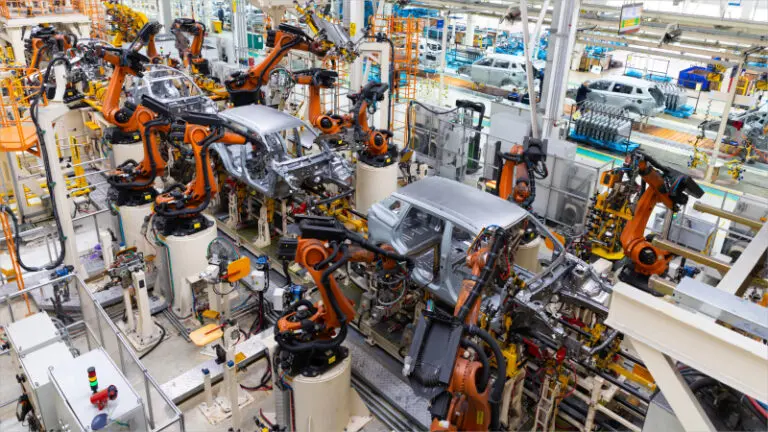
JUN-24 WPI INFLATION AT 16-MONTH HIGH OF 3.36%
The wholesale price index (WPI) inflation for June 2024 touched a 16-month high of 3.36% after scaling 2.61% in the previous month of May 2024. It may be recollected that the WPI inflation was persistently in the negative between April 2023 and October 2023. However, since November 2023, the WPI inflation has been in the positive zone. In fact, since February 2024, the WPI inflation has surged from 0.20% to 3.36%; largely on the back of a spike in wholesale food inflation and manufacturing inflation turning around from negative to positive. The latter is indicative of the fact that the input cost is becoming a challenge for the Indian manufacturing sector. We will come back to this point later.
WPI INFLATION TRENDS IN THE LAST 6 MONTHS
There is no better way to understand WPI inflation trends, than by looking at a time series data. Here is a quick look at how the WPI inflation evolved over the last 6 months.
The last 7 months since November 2023 have seen WPI inflation turn around from negative to positive and touch a 16-month high. The worry is that it could escalate manufacturing costs, which has a magnifying impact on inflation.
WPI AND CPI INFLATION TREND IN LAST 1 YEAR
The table below captures the trend of CPI inflation and WPI inflation over the last one year. These are yoy numbers as reported each month; with revisions.
| Month | WPI Inflation (%) | CPI Inflation (%) |
| Jun-23 | -4.18% | 4.81% |
| Jul-23 | -1.23% | 7.44% |
| Aug-23 | -0.46% | 6.83% |
| Sep-23 | -0.07% | 5.02% |
| Oct-23 | -0.26% | 4.87% |
| Nov-23 | 0.39% | 5.55% |
| Dec-23 | 0.86% | 5.69% |
| Jan-24 | 0.33% | 5.10% |
| Feb-24 | 0.20% | 5.09% |
| Mar-24 | 0.26% | 4.85% |
| Apr-24 | 1.19% | 4.83% |
| May-24 | 2.61% | 4.80% |
| Jun-24 | 3.36% | 5.08% |
Data Source: Office of the Economic Advisor
The monthly WPI data for the last one year demonstrates that WPI inflation turned around to positive in November 2023 after being negative for 7 months in a row in FY24 from April to October. In June 2024, the pressure has come from the food basket and from the manufacturing basket. Manufacturing has a deeper impact due to its strong 64.23% weightage in the WPI index. However, there is also the base effect at play in this entire story. For example, between April 2023 and May 2023, the base WPI inflation deepened further into the negative from -3.61% to -4.18% resulting in a spike in the WPI inflation in the current month of June 2024. Hopefully, this effect should get sobered out in the coming months after which the WPI inflation should reflect a secular trend.
Last year in June 2023, the WPI inflation had bottomed out at -4.18% before gradually rising and getting back into positive territory. Hence, June 2024 reporting sharply higher WPI inflation is not too surprising. Going ahead, as the base goes higher, the impact on the current WPI inflation could be more benign. Let us now turn to the revisions of previous WPI data, which is normally done when new data points emerge. Based on additional data points, the final WPI inflation for April 2024 has been reduced by 7 basis points from 1.26% to 1.19%. The one thing to watch out will be the impact of rising manufacturing inflation on input costs of Indian companies, as that is something even the RBI is concerned about.
WPI INFLATION (YOY) SHIFTS IN JUNE 2024
Here is a quick look at the break-up of WPI inflation and its 3 major components viz. primary products basket, fuel & power basket, and the manufacturing products basket. Manufacturing has the highest weightage of 64.23%.
| Commodity Set | Weight | Jun-24 WPI | May-24 WPI | Apr-24 WPI |
| Primary Articles | 0.2262 | 8.80% | 7.20% | 5.23% |
| Fuel & Power | 0.1315 | 1.03% | 1.35% | -0.85% |
| Manufactured Products | 0.6423 | 1.43% | 0.78% | -0.14% |
| WPI Inflation | 1.0000 | 3.36% | 2.61% | 1.19% |
| Food Basket | 0.2438 | 8.68% | 7.40% | 6.09% |
Data Source: Office of the Economic Advisor
Between November 2023 and February 2023, the shifts in WPI inflation were largely driven by the vicissitudes of food basket. In April 2024, while the negative inflation in manufacturing hardened, fuel turned around to positive and food inflation spiked higher. However, in May and June 2024, it has been a combination of a sharp spike in the food basket inflation as well as the manufacturing WPI inflation turning around from negative to positive territory. Between April 2024 and June 2024, primary articles (comprising of mining and food crops) saw WPI inflation spiking from 5.23% to 8.80%.
In the same period, fuel inflation has been erratic, largely because the regulated nature of fuel prices in India don’t permit the market impact to be transmitted to fuel prices. The manufacturing basket was hit by inflation hardening from -0.14% to +1.43%. This could have larger implications for input cost and the input cost impact on inflation. However, this challenge has been around for some time and manufacturers are using rightsizing of products and aggressive discounts to neutralize this impact. One concern is that with elections over, fuel prices may spike again.
HIGH FREQUENCY MOM WPI INFLATION SHIFTS IN JUNE 2024
The yoy inflation is still quite vulnerable to the base effect. One option is to look at the high frequency MOM WPI inflation. MOM inflation captures short-term trends better.
| Commodity Set | Weight | Jun-24 WPI | May-24 WPI | Apr-24 WPI |
| Primary Articles | 0.2262 | 2.08% | 0.32% | 2.13% |
| Fuel & Power | 0.1315 | -1.93% | -0.53% | -0.46% |
| Manufactured Products | 0.6423 | 0.14% | 0.35% | 0.79% |
| WPI Inflation | 1.0000 | 0.39% | 0.26% | 0.99% |
| Food Basket | 0.2438 | 2.48% | 0.60% | 2.33% |
Data Source: Office of the Economic Advisor
Let us quickly look at how the MOM WPI inflation provides better insights into the short term trends in WPI inflation. Here is a summary.
Apart from these, the food basket (a sub-set of primary basket) also spiked by 2.48% MOM in the month of June 2024. Needless to say, the maximum pressure came from the primary basket, although manufacturing also exerted magnified pressure due to its weightage.
WPI BASKET – BIG SWING FACTORS IN JUNE 2024
What do we mean by swing factors? These swing factor are key drivers of WPI inflation (both on the upside and downside). From the time, India witnessed lower than expected rainfall in July 2023 last year, there has been pressure on the food basket. Subsequently, the pressure came from erratic monsoons, intermittent floods, and periodic drought conditions. Contributing to these challenges was the weak market infrastructure. In 2023, the Rabi output could not really make up for the Kharif shortfall; resulting lower food output. This impact was more pronounced on cereals and pulses. The table below captures the Swing factors in WPI basket on both sides. The left hand side (LHS) looks at positive drivers; while right hand side (RHS) looks at negative drivers for WPI inflation. All shifts are on a yoy basis.
| Commodity | WPI Inflation | Commodity | WPI Inflation |
| Onions | 93.35% | Cement, Lime, Plaster | -4.15% |
| Potatoes | 66.37% | Paper & Paper Products | -3.69% |
| Vegetables | 38.76% | Oil Seeds | -3.33% |
| Pulses | 21.64% | Eggs, Meat, and Fish | -3.06% |
| Crude Petroleum | 14.04% | Fabricated Metals | -2.58% |
| Paddy | 12.07% | Non-metallic mineral products | -2.38% |
| Fruits | 10.14% | High Speed Diesel (HSD) | -1.78% |
| Minerals | 9.59% | Mild & Semi-Finished Steel | -1.31% |
| Cereals | 9.27% | Chemicals & Chemical Products | -1.09% |
| Wheat | 6.25% | Leather & Leather Products | -0.48% |
Data Source: Office of the Economic Advisor
The story of the WPI inflation is now divided into 2 key narratives. On the left hand side (LHS) are the products that are driving the yoy WPI inflation higher. Not surprisingly, most of the pressure on WPI inflation is coming from food product basket or the agricultural basket. In fact, 8 out of the 10 swing products are from the agricultural and food basket. The remaining two (minerals and crude oil) are also from the primary basket; so that is the basket that is causing all the upward swing in WPI inflation. What about the commodities putting downward pressure on the WPI inflation? Out of the 10 top negative swing drivers of WPI inflation, 1 is an agricultural product, 1 is a poultry product and, and 1 is a mineral commodity. The remaining 7 items are manufactured products. WPI containment continues to come from manufacturing.
OUTLOOK FOR FISCL FY25 WPI INFLATION?
For FY25, we now have 3 months of WPI data. That may not be sufficient for a full-year extrapolation but we can always do an apples to apples comparison. For the first quarter of FY25, the WPI inflation stands at 2.38%, compared to -2.87% in the corresponding first quarter of FY24. Clearly, the comparable WPI inflation is 525 bps higher compared to the previous financial year and that is not too surprising. That is likely to translate into a lot of positive WPI price pressure in the current fiscal year. However, some basic insights are already there and let us look at how the distribution looks like. For FY25 (3 months data), the cumulative WPI inflation stands at 2.38%, in contrast to -2.87% in the corresponding period last year. The real pressure in Q1-FY25 is coming from the primary basket, which have moved up from -1.03% to 7.07% on yoy basis. Both food and non-food articles have contributed to a spike in primary inflation in FY25.
While fuel inflation for the first quarter has bounced from -7.14% to 0.49% on yoy basis, the real trouble is coming from the manufacturing basket. For the first quarter of FY25, the manufacturing basket inflation has spiked from -2.70% to 0.69%. That means cost-push inflation could be real in FY25 and that is an important cue for RBI. It has to move quickly on rate cuts to soften the price hike impact.
Related Tags

Invest wise with Expert advice
![]() IIFL Customer Care Number
IIFL Customer Care Number
(Gold/NCD/NBFC/Insurance/NPS)
1860-267-3000 / 7039-050-000
![]() IIFL Capital Services Support WhatsApp Number
IIFL Capital Services Support WhatsApp Number
+91 9892691696
IIFL Capital Services Limited - Stock Broker SEBI Regn. No: INZ000164132, PMS SEBI Regn. No: INP000002213,IA SEBI Regn. No: INA000000623, SEBI RA Regn. No: INH000000248
ARN NO : 47791 (AMFI Registered Mutual Fund Distributor)

This Certificate Demonstrates That IIFL As An Organization Has Defined And Put In Place Best-Practice Information Security Processes.